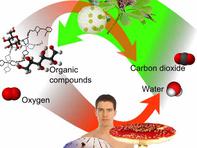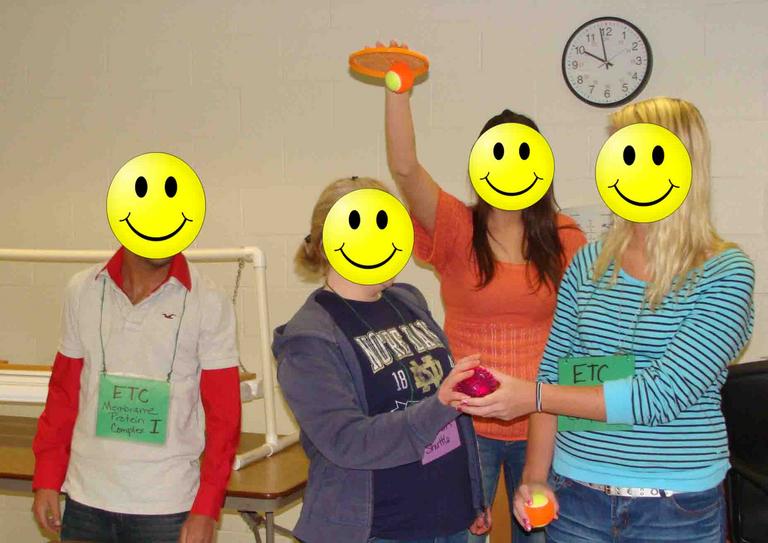 | ||||
Metabolism: Aerobic Respiration
Practice Test Questions II
Virtual Cell Biology Classroom of Science Prof Online
Aerobic Respiration Test Questions - Part 2
SPO VIRTUAL CLASSROOMS
2. After glycolysis, the molecule that was glucose enters the acetyl-CoA step of cellular respiration as…
a. ATP b. 2 molecules of pyruvic acid
c. acetyl-CoA d. an electron
3. Where does electron transport of cellular respiration happen in an animal cell?
a. plasma membrane
b. cytoplasm
c. nucleus
d. mitochondria
e. chloroplast
4. Catabolic reactions are when:
a. smaller molecules result from the breakdown of larger molecules
b. larger molecules are synthesized from smaller molecules
c. one molecule transfers a monomer to another
d. people eat each other
5. Which part(s) of cellular respiration utilize the oxygen that we breathe in?
a. glycolysis & synthesis of acetyl CoA
b. synthesis of acetyl CoA
c. electron transport
d. Kreb's cycle
e. synthesis of acetyl CoA & electron transport
1. Krebs Cycle of cellular respiration, produces a net gain of...
a. 0 ATP
b. 1 ATP
c. 2 ATP
d. 3 ATP
e. 34 ATP
The following questions are designed to help students better understand this topic. All questions are based on material that can be found on the Aerobic Respiration Lecture Main Page.
 | ||||
Free review questions to help students better understand
Page last updated 10/2015
The SPO website is best viewed in Microsoft Explorer, Google Chrome or Apple Safari.
You have FREE access to a large collection of materials used in a college-level introductory biology course. The Virtual Biology Classroom provides a wide range of free educational resources including PowerPoint Lectures, Study Guides, Review Questions & Practice Test Questions.
You have free access to a large collection of materials used in a college-level introductory Cell Biology Course. The Virtual Cell Biology Classroom provides a wide range of free educational resources including Power Point Lectures, Study Guides, Review Questions and Practice Test Questions.
More ...
6. In glycolysis, the electron carrier molecule _______ is (oxidized / reduced).
a. NAD+ , oxidized
b. NAD+, reduced
c. NADH, oxidized
d. FAD, reduced
e. FADH, oxidized
7. A hydrolysis reaction would be considered...
a. anabolism b. catabolism
c. cannibalism d. dehydration
8. Redox reactions ...
a. transfer energy
b. transfer electrons
c. involve oxidation and reduction
d. are involved in all of the above
9. Which of the following best represent the end products of glycolysis?
10. Anabolic reactions…
a. require energy
b. release energy
c. break down molecules
d. do not involve energy
 | ||||
See the
for a fun, hands-on way to teach students the steps of the ETC!






